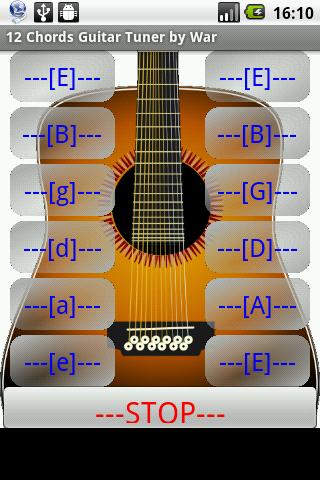

Therefore, it is a common practice to learn to play on an inexpensive bajo sexto and pick up small gigs with the intention of upgrading down the line. Norteño music is closely tied to live performance. But the quality, sound, and playability of a handmade bajo remains unmatched. Present-day bajo sexto players, whether novice, professional, or somewhere in-between have a lot of options to choose from.
.jpg)
Their skill set, as formed by making Mariachi instruments like vihuelas and guitarrones, made it feasible to add bajo sextos to their production, especially with the increasing demand for them.
#12 string guitar in spanish how to
However, these styles were not as prevalent in the rest of Mexico, and luthiers from states further south, like Michoacan, had to learn how to manufacture them. Handmadeīehind Norteño and Sierreño’s signature sound is the craftsmanship of the luthiers who build quality instruments. As the Sierreño guitar evolves and the genre finds its place in the mainstream, it has yet to solidify into an instrument that can be mass produced.
#12 string guitar in spanish pro
His love for pairing Takamine Pro Series 12-strings and 6-strings in his ensemble has made Takamine the brand of choice among Sierreño enthusiasts.ĭue to Sierreño’s popularity being fairly recent, there’s only a handful of companies, even in Mexico, that have addressed this niche.

This modification adds a lot more strain on the bridge and neck and usually requires the nut to be modified, the neck to be compensated, and the bridge to be reinforced with aftermarket products.Īfter the tragic death of Sierreño rising star Ariel Camacho, the popularity of the genre skyrocketed among young players. To the disdain of many luthiers and manufacturers, players usually swap out the stock string sets, for all six courses to be matched string gauges-that is, instead of using a thinner gauge for pairs of strings tuned an octave apart, each set of two strings is the same. In Sierreño music, the 12-string guitar or requinto is preferred in part due to its higher range, allowing players to approximate the sound of a bajo sexto and play melodic arrangements in clusters of 16th notes, usually in the first two courses.īecause of this, players prefer guitars with a cutaway. Jesus Sevillano 12-string requinto Sierreño guitar. Sierreño, however, has great options to choose from in factory-made instruments. In order for a bajo quinto and sexto to be considered professional, they will most likely have to be handmade and customized. In the early days of Norteño, a bajo sexto player would take on part of the bass duties using the sixth and fifth course for bass accompaniment, allowing the accordion player to show off some of their fancy button work. Additionally, arrangements or "arreglos" for Norteño stay within the first three courses of strings, leaving the fourth and fifth strings relatively unused. The bajo quinto has a thinner neck profile and is easier to string and adjust. With the adoption of the electric bass, the bajo quinto has made the bajo sexto's lower register redundant. The confluence of German and Czech immigrants settling in the Texas region with Mexican migrants would eventually lead to the fusion of musical styles and instrumentation that would give birth to the bajo sexto.īoth the bajo sexto and bajo quinto share the same tuning-standard E with the first two courses tuned half a step sharp-though the bajo quinto does not include a low E. Used in huapangos, or regional dance performances, the Guitarra Huapanguera travelled with migrants and was exposed to Northern Mexicans as well as European immigrants. Another guitar using a similar string arrangement present in Mexico’s music history is the "Guitarra Huapanguera." Its influence is said to be clear not only in its design, but the regional proximity to the northern region where Norteño was developed. The influence of Spanish baroque guitar on Mexico made it so the "Guitarra Séptima" was developed using a similar design, intended for classical guitar. Both scholars and luthiers have suggested that a cross-pollination of Mexican and European influence gave way to these guitars. The origins of the bajo sexto dates back to the 1800s.

A custom-made Jesus Sevillano Bajo Quinto.


 0 kommentar(er)
0 kommentar(er)
